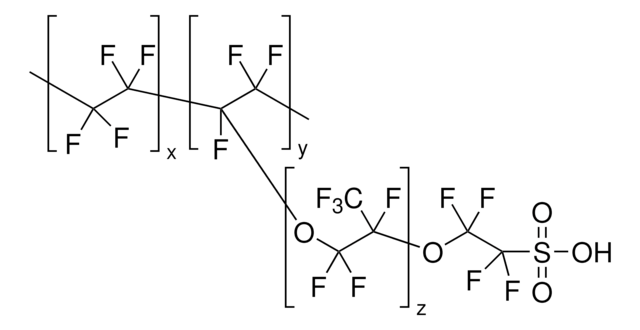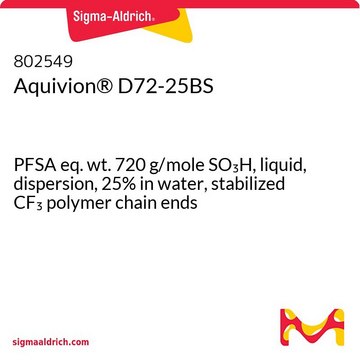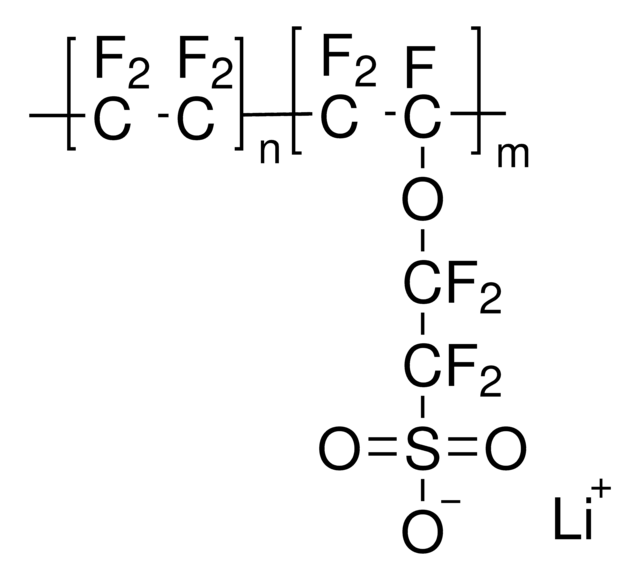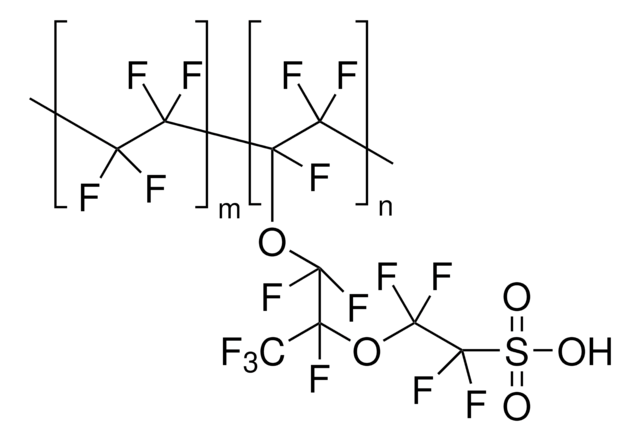915327
Aquivion® pellets P87-SO2F
cylindrical pellets 2mm, PFSF eq. wt. (870 g/mole SO2F)
Synonym(s):
Aquivion® SO2F-form, Ethanesulfonyl fluoride, Perfluoro(3-oxa-4-pentenesulfonyl fluoride)-tetrafluoroethylene copolymer
About This Item
Recommended Products
form
pellets
Looking for similar products? Visit Product Comparison Guide
General description
Application
- Aquivion® P87 pellets can be melt-pressed or extruded into plates, sheets or thin films down to about 50μm. The extruder shall be equipped with a standard three-zone metering screw devoid of barrier or mixing elements. Optimum temperature settings will depend on the configuration of the equipment but generally cover 100 to 300°C range. Optionally functional groups in the molded part are then hydrolyzed in baths or wet benches with a heated base (NaOH, KOH etc), reaction which may take minutes or hours, depending on thickness and conditions.
- Aquivion® P87 pellets can be directly hydrolyzed as described - either completely or only on their outer surface. This will enable functional activity of the sulfonic acid / sulfonyl salt groups for ion-exchange operations or as acid catalyst.
Legal Information
Storage Class Code
11 - Combustible Solids
WGK
WGK 3
Flash Point(F)
Not applicable
Flash Point(C)
Not applicable
Choose from one of the most recent versions:
Certificates of Analysis (COA)
It looks like we've run into a problem, but you can still download Certificates of Analysis from our Documents section.
If you need assistance, please contact Customer Support.
Already Own This Product?
Find documentation for the products that you have recently purchased in the Document Library.
Articles
Advances in the electrochemical conversion of water to and from hydrogen and oxygen have principally been achieved through the development of new materials and by understanding the mechanisms of the degradation of proton exchange membrane fuel cells (PEMFC) during operation.
Our team of scientists has experience in all areas of research including Life Science, Material Science, Chemical Synthesis, Chromatography, Analytical and many others.
Contact Technical Service




